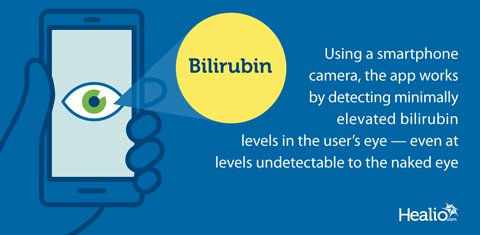Smartphone app Could Detect Pancreatic Cancer Using ‘Selfies’
A new smartphone app called BiliScreen showed promise for pancreatic cancer screening by analyzing signs of jaundice in photos of a user’s eyes.
Developers hope this tool can help facilitate earlier detection of pancreatic cancer, which has one of the worst survival rates, in at-risk individuals.
“The problem with pancreatic cancer is that by the time you’re symptomatic, it’s frequently too late,” Alex Mariakakis, a PhD student at the Paul G. Allen School of Computer Science and Engineering at University of Washington, said in a press release. “The hope is that if people can do this simple test once a month — in the privacy of their own homes — some might catch the disease early enough to undergo treatment that could save their lives.”
With jaundice being one of the earliest symptoms of pancreatic cancer, the app works by detecting minimally elevated bilirubin levels in the user’s eye — even at levels undetectable to the naked eye — by using a smartphone camera, computer vision algorithms and machine learning tools. Designers created it to be a more convenient screening option than a blood test, and to potentially monitor bilirubin in pancreatic cancer patients, or to detect hepatitis or Gilbert’s syndrome, according to the press release.

“The eyes are a really interesting gateway into the body — tears can tell you how much glucose you have, sclera can tell you how much bilirubin is in your blood,” Shwetak N. Patel, PhD, the Washington Research Foundation Entrepreneurship Endowed Professor in Computer Science & Engineering and Electrical Engineering, said in the press release. “Our question was: Could we capture some of these changes that might lead to earlier detection with a selfie?”
Investigators performed a preliminary clinical study of 70 people with normal, borderline and elevated bilirubin levels. To account for different lighting conditions, they tested the app using two different accessories: a 3D printed box that controls the eye’s exposure to light, or paper glasses printed with colored squares that help calibrate color.
They found that using the app with the box accessory yielded better results than the glasses, correctly identifying cases of concern with 89.7% sensitivity and 96.8% specificity. The Pearson correlation coefficient was 0.89 and the mean error was –0.09 ± 2.76 mg/dL in predicting an individuals’ bilirubin level.
Previous work from the University of Washington’s Ubiquitous Computing Lab — which collaborates with physicians from the University of Washington Medicine to use consumer devices like smartphones to screen for disease — similarly showed a smartphone app called BiliCam could screen for jaundice using photos of newborns’ skin. They chose to focus on the sclera of the eyes in adults as they are more sensitive to changes in bilirubin, and are more consistent across races and ethnicities, according to the press release.
The research team now plans to test the app on a wider range of at-risk individuals, and hopes to improve usability and remove the need for accessories.
“This relatively small initial study shows the technology has promise,” Jim Taylor, MD, a professor in the department of pediatrics at University of Washington Medicine, said in the press release. “Pancreatic cancer is a terrible disease with no effective screening right now. Our goal is to have more people who are unfortunate enough to get pancreatic cancer to be fortunate enough to catch it in time to have surgery that gives them a better chance of survival.” – by Adam Leitenberger
Disclosures: Healio Gastroenterology and Liver Disease was unable to confirm the researchers’ relevant financial disclosures at the time of publication.
